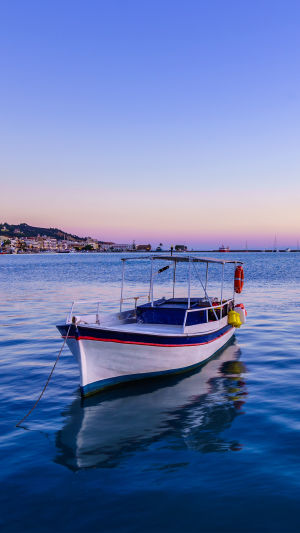The fishing vessel is the collective name of vessels for fish catching, processing, and transportation, which are vessels for fishing and harvesting aquatic animals and plants.
And also include some auxiliary vessels for modern fishing production, such as vessels for fish processing, transportation, breeding, resource investigation, fishery instruction, and training, as well as performing fishery administration tasks.
To ensure the quality of the catch, preservation is one of the important functions of fishing vessels.
The preservation methods on board are generally ice storage, cold seawater preservation, salt storage, micro-freezing, freezing, etc.
There are different ways to classify fishing vessels.
1. According to the operating waters, they are divided into marine fishing boats and freshwater fishing boats, and marine fishing boats are divided into coastal, offshore, and ocean-going fishing boats.
2. According to the hull material, they are divided into wooden, steel, glass steel, aluminum alloy, wire mesh cement fishing boats, and various mixed structure fishing boats.
3. According to the propulsion mode, they are divided into the motor, sail, and manual fishing boats.
4. According to the tasks undertaken by fishing boats, can be divided into two categories: fishing boats and fishing auxiliary boats.
To adapt to the development of production, people keep transforming fishing boats and integrating new technology to make more and more advanced fishing boats.
Especially after the 1950s, fishing boats have undergone a radical change, gradually realizing the modernization and motorization of fishing boats.
With the progress of the times, people's requirements and concepts of fishing boat construction have undergone fundamental changes.
The fishing boat is no longer a single fishing tool, but a fish production base integrating fishing, storage, and processing.
Some developed countries, such as Japan, already have fishing boats with multiple functions in one.
The power system of fishing boats also gradually adopts green new energy, such as wind power, solar energy, and other environmentally friendly new energy.
Features of fishing boats
1. Most fishing boats are small in size, however, to adapt to continuous navigation and operation in wind and waves, better stability and seaworthiness are required, and the structure needs to be especially strong.
2. The load capacity varies greatly during operation.
3. Marine equipment requires reliable structural performance, sturdy and durable, and easy maintenance.
4. The main engine power is larger and the relative speed is higher.
5. In addition to the configuration of general marine equipment, fishing equipment, preservation and processing equipment, fishing and navigation equipment, etc.
The fishing cabin requires the good-performance of insulation facilities.





